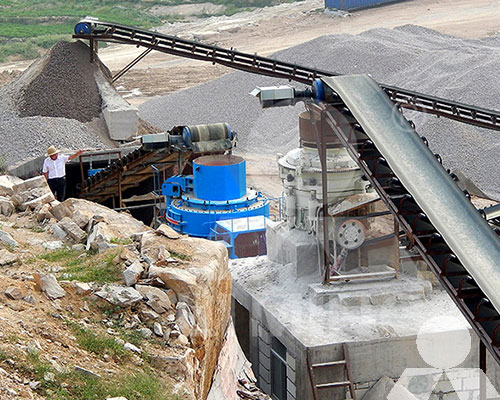Wiki
Last Updated :2023-08-02 Views:510
What are the characteristics of the mechanism sand making process?
The mechanism sand making process, also known as artificial sand manufacturing, involves producing sand from aggregates (rocks, stones, etc.) through mechanical methods. This process is used to manufacture sand for construction purposes and other applications where natural sand may not be readily available or suitable. Here are some of the key characteristics of the mechanism sand making process:

- Raw Material Selection: High-quality and consistent aggregates are selected as the raw materials for the process. These aggregates typically include crushed rocks, limestone, granite, basalt, and other hard and durable materials.
- Crushing and Shaping: The selected raw materials are crushed using primary and secondary crushers to reduce their size. The crushed aggregates are then further processed to achieve the desired particle shape through shaping machines like vertical shaft impactors (VSI) or cone crushers.
- Washing and Grading: In some cases, the crushed aggregates may undergo a washing process to remove impurities and achieve the required level of cleanliness. The washed aggregates are then graded or screened to separate them into different size fractions.
- Sand Making Machine: The core component of the mechanism sand making process is the sand making machine, such as a vertical shaft impact crusher (VSI) or a sand making unit. This machine uses the principle of “rock-on-rock” or “rock-on-metal” crushing, where rocks or aggregates are accelerated to high speeds and collide with each other to produce sand particles with a consistent shape.
- Grading and Controlling Particle Size: The mechanism sand making process involves precise control over the particle size distribution to produce sand with specific characteristics suitable for various applications, such as concrete production or plastering.
- Multiple Stages: The process may involve multiple stages of crushing, shaping, and screening to achieve the desired final product specifications.
- Environmental Considerations: The mechanism sand making process is designed to minimize environmental impact. It may include dust collectors and water treatment systems to control dust emissions and recycle water used during the washing process.
- Energy Efficiency: Manufacturers strive to optimize the process to minimize energy consumption and maximize production efficiency.
- Cost-Effectiveness: Mechanism sand is often considered a cost-effective alternative to natural sand, especially in regions where natural sand is scarce or costly to obtain.
- Customization: The process can be tailored to produce sand with specific characteristics, such as gradation, shape, and composition, to meet the requirements of different construction projects.
Overall, the mechanism sand making process offers a reliable and controlled method of producing high-quality sand for various construction and industrial applications. It helps meet the growing demand for sand while conserving natural resources and minimizing environmental impact.









